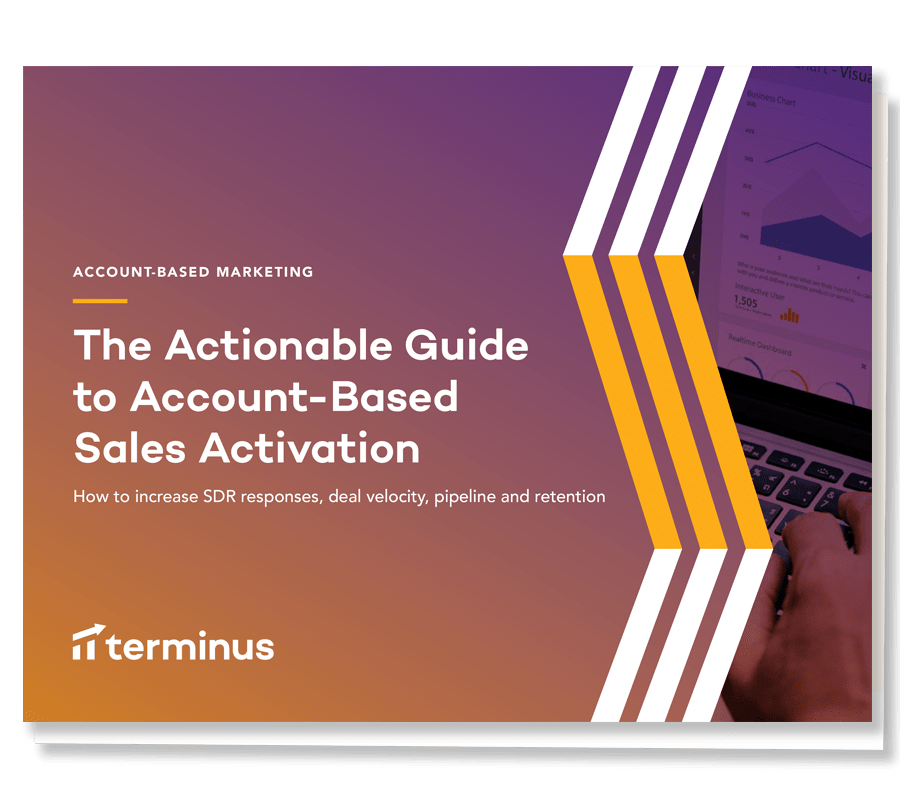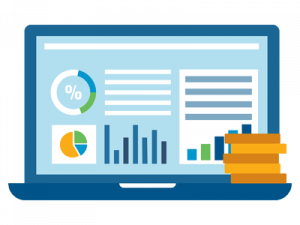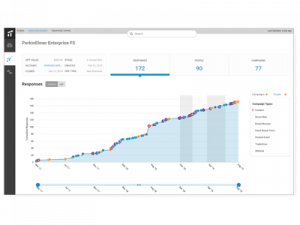The Actionable Guide to Account-Based Sales Efficiency
Terminus and ABM offers more channels, more data, and more opportunities to increase sales efficiency and win more deals. Learn more by requesting a demo or reading this ebook.


The #1 ABM Platformfor Sales Efficiency & Effectiveness
Give your sales team the air cover and data they need to progress and win more deals. Learn more about Terminus in our “Terminus for Sales Teams” overview.

Why Sales Teams Love an ABM Strategy
LEARN WHY HERE
How Sales Teams Today Use Terminus
A SALES GUIDE TO TERMINUS
Strategic Account-Based Deal Coaching for Sales Leaders & Sellers
GET THE WORKSHEETSales Efficiency
Even though many would consider sales to be an art, there are many ways that science can be added to the process. Doing so helps you find out which prospects are the most likely to be converted into customers, how long it takes for this to happen, and which sales methods are giving you or your team the best results. With this type of information, you can improve both sales efficiency and effectiveness.
What is sales efficiency? Sales efficiency is a figure that is arrived at by the use of a sales efficiency formula that involves dividing the gross revenue generated by a salesperson or team by the expenses associated with generating that sale. These expenses include standard overhead like office space and phone service as well as sales-specific costs such as training and materials. An example from HubSpot is a team that generates $15 million in sales at a cost of $5 million. This gives the example team a sales efficiency of 3.
Improving sales efficiency is usually a matter of speeding up the process. This makes it so that more sales are made within a set period. Revenue then increases, while set costs like office space remain the same. Because of this, most who think about “how to increase sales efficiency” will start pushing their teams to be faster by setting aggressive sales efficiency benchmarks. However, it is important to remember that rushing around is not, itself, an effective way to improve conversion ratios. The question of sales efficiency vs effectiveness should always be kept in mind, as well.
One of the most popular sales efficiency metrics is derived from the sales efficiency magic number formula. This is the formula described earlier, which divides revenue by expenses for a set period. Thanks to common corporate accounting process, quarterly calculation of the sales magic number SaaS is common. Some sources say that the quarterly figures should be annualized for better results. It can also be a good idea to run the numbers more frequently, especially if a new sales technique is being tried or your company has released a new product.
Usually, this figure is calculated for total sales team efficiency, inside sales efficiency, or field sales efficiency. However, it can also be useful for determining which sales people are over- or underperforming.
Companies that use SaaS sales tools are often more attuned to the concept of sales efficiency metrics since these platforms can automatically run the sales efficiency calculation. Whether they call it the “magic number” or “sales efficiency Tunguz” score, it will amount to the same basic thing. It can stand alone or be part of a larger SaaS capital efficiency calculation. Thanks to its popularity, it is – in one form or other – almost sure to be one of the SaaS efficiency metrics you’ll run into.
Sales Effectiveness
Even though the terms may seem similar, sales effectiveness is not the same as sales efficiency. Efficiency is simply the status of being able to do a lot of something in a fairly short time. It only translates to effectiveness when the “something” leads to what you are aiming at. If a team does a lot of the wrong thing, it will not be effective.
Because of this, success depends on knowing the difference between sales efficiency vs sales effectiveness. Good sales effectiveness metrics are customized according to the company’s goals. For example, if the goal is to sell more of a new kind of product, only actions that actually lead to more sales of that specific item count towards effectiveness. The ability to sell another product does not make the team effective at this goal, so it would be discounted in this case.
Of course, if your company has some other goal, it will use a different metric when it answers the question of how to measure sales effectiveness. Your business’ sales effectiveness best practices must therefore be customized to meet its needs.
Platforms meant to manage and improve sales make it easy to keep track of this stat. Sales Force effectiveness metrics are easy to set and watch.
Notably, it is important to keep track of sales efficacy measurements for each salesperson as well as entire teams. This allows individuals to be praised or corrected according to their specific performances. The resulting improvements combine to improve the entire team.
Sales Productivity
Just like the other two terms, sales productivity has its own definition. When asked “what is sales productivity,” Salesforce’s Jason Jordan defines it as the product of efficiency multiplied by effectiveness. To put it another way, it is the output of your sales team.
While the multiplication formula isn’t always as simple as the quick statement of it seems, there are a few times that it is. For example, if 10 people make 10 sales calls each, predicting the sales productivity is as easy as multiplying the average revenue per call by 100. It gets trickier when you drill down into the statistic a bit. For example, you may find that one person makes twice as many sales as the average sales staffer, while there’s someone on the low end who makes no sales at all.
Addressing these issues requires knowing each salesperson’s stats and applying a personalized approach to improving the laggards’ performance. Meanwhile, top performers should be rewarded in ways that motivate the rest of the team to try to get in on those rewards as well. This allows you to improve team performance by improving the team’s constituent parts.
If the entire team is underperforming as a group, it’s time to look at where the problems could be. Many managers and company operators start with efficiency since that’s easy to improve. Often, sales software is all that is needed to make repetitive tasks go more quickly. However, if this doesn’t work, it’s time to work on effectiveness. This typically requires new training as well as benchmarking SaaS in ways that allow for incremental improvement. Therefore, it takes longer. However, good sales productivity requires mastery of both parts of the equation.
It is also important for everyone in your company to know the sales productivity meaning that you are operating under. This keeps everyone focused on the same metrics, thereby improving their focus and success at hitting the desired goals.
How to Measure Sales Productivity
Thanks to the differences between companies, there is no one answer to how to measure sales productivity. Instead, the method has to reflect the goals of the company. This ensures that the company’s definition matches that of the sales team and the individuals on it. Of course, the company’s goal takes the lead, and it is up to the salespeople to reach that goal.
Some common company goals include selling more of a particular product, getting customers to buy more things, or getting people to switch from an old product line to a new one. Therefore, the primary benchmark should be how many of the desired types of sales are completed.
It is also important to keep track of efficiency. Remember, the sales productivity formula is sales efficiency x sales effectiveness. Setting goals for things like emails sent, calls made, number of client meetings, number of product demonstrations given, and any other relevant basics helps to keep your sales team on track and reduces wasted time. That said, it’s essential to keep the effectiveness part in mind. If a team is able to send 10,000 emails per hour, that is only impressive if those emails actually result in sales. Be sure to emphasize the need for these actions to produce tangible results so that people don’t just try to hit “numbers” that are otherwise meaningless.
When it comes to effectiveness, remember that every type of product or service has a different rate that can be expected. For example, if you sell $100,000 cars, you can generally expect a slower sales cycle and fewer takers than you would get if you were selling $10 impulse items. Be sure to tailor your expectations to fit the realities of your market.
How to Measure Sales Performance
Overall sales performance is the result of your sales team’s success levels at the other three benchmarks: Efficiency, effectiveness, and productivity. These components work together to show how to measure sales performance. Often, this measuring is done by SaaS sales platforms that make it easy to track various metrics and score them according to the goals you set.
SaaS CAC benchmarks, which measure customer acquisition cost, are some of the most important ones to pay attention to. If this cost is going up or is already above the standard for your industry, the software makes it easy to drill down and find out where problems may lie. Conversely, if you find that one of your salespeople or teams is showing a low CAC, you can examine the details to find out what they’re doing right so that others in your organization can learn the improved methods.
The SaaS gross margin benchmark is another important beacon to watch. While gross margin isn’t as indicative of success as net, it can help you spot good and bad trends and address them.
SaaS spending benchmarks are great for keeping track of how much is being spent to perform sales activities and making sure that this amount is in line with your targets. It may be a surprise, but some sales departments don’t spend enough to be as effective as they could be. Therefore, you should watch out for this as well as overspending.
These are just a few of the SaaS metrics benchmarks that are available in platforms meant to improve your sales performance. You’ll also find plenty for each of the other categories involved in the sales process. Be sure to use all of the ones relevant to your company, and do so frequently. With this information at hand, it’ll be much easier to improve your sales team’s success rates.



